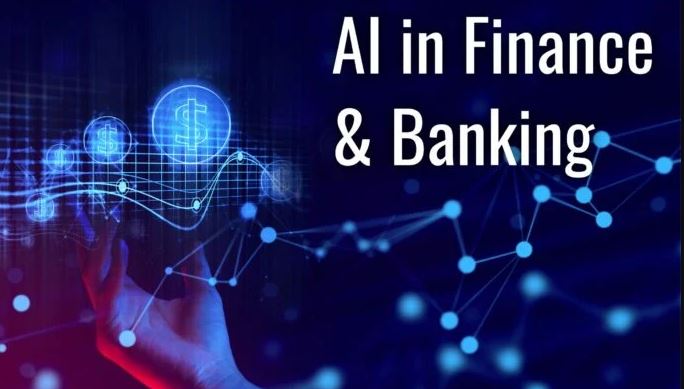Artificial intelligence (AI) innovations aim improving customer experiences and access across financial services. However, as algorithms permeate deeper into banking systems, intentional focus must remain upholding legal compliance and reducing biases that can disadvantage groups even inadvertently through technology. Maintaining high ethical standards as AI capabilities advance ensures prudent protections for consumers and market integrity overall.
The Promises and Perils of AI in Finance
AI-driven software utilizing machine learning (ML), predictive analytics, speech recognition, computer vision and more offer banks abilities improving speed, personalization and automation across areas like:
- Fraud monitoring
- Customer service chatbots
- Credit decisioning processes
- Investment recommendations
- Expense categorization
Applied properly, AI can enhance security, save customers time, and expand financial inclusion. However, lacking appropriate safeguards also introduces risks around data privacy, algorithmic biases, and resilience against attacks aiming to manipulate systems. As algorithms make more impactful decisions, ensuring governance and explainability behind AI becomes paramount.
AI Bias and Explainability
One danger of AI – especially machine learning techniques where algorithms “train” themselves recognizing patterns within data – is inheriting or exacerbating societal biases and discrimination through tech. Because ML solutions remain black boxes by nature, biases hidden within data or misguided programmer assumptions can unconsciously skew automated decisions made impacting application outcomes.
For example, translation software defaulting to masculine pronouns propagates gender assumptions. Or facial analysis algorithms often misidentify non-Caucasian individuals. In financial contexts, this could manifest unfairly restricting certain customer eligibility for credit, insurance or accessing services.
While perhaps unintentional, such algorithmic biases conflict ethical policy standards governing fair and equal treatment. They also raise legal risks around disparate impact violating equal opportunity protections prohibited when neutral policies adversely impact specific groups protected by law even absent explicit intent.
This underscores why intentional software engineering focused on explainable AI (XAI) and algorithm auditing processes must accompany AI adoption in banking to detect biases. Techniques like keeping humans actively involved reviewing ML-generated actions (“human-in-the-loop”) or requiring AI to show work explaining why decisions reached (“counter-factual explanations”) sustain accountability determining impacts.
Prioritizing AI ethics translates directly into prudent risk management and integrity preserving consumer trust and marketplace stability as algorithmic reach expands.
AI Security and Attack Vectors
Additionally, while AI promises enhanced analytics improving fraud detection, its growing centrality also makes it a target for malicious schemes aiming to manipulate machine learning algorithms themselves and launch more damaging attacks harder to trace by humans.
Emerging data poisoning methods use innocuous looking but tainted data to intentionally train AI fraud models inadequately permitting greater criminal activity flying under the radar. Adversarial inputs similarly aim to trick the AI “brain” reaching false conclusions benefitting bad actors.
So alongside AI explainability to mitigate bias risks, continually escalating security responsive to match evolving AI-based threats remains imperative. Ongoing penetration testing around algorithm robustness against variances and edge cases should accompany deployments, along with monitoring for indices of data poisoning attempts.
Architecting comprehensive “AI cybersecurity” requires balancing innate statistical strengths of machine learning while safeguarding enough human auditing ensuring ethical accountability. Hybrid approaches combining traditional rules-based monitoring, anomaly detection, external audits and more layered defenses sustain resilience as threats multiply.
Principles for Responsible AI in Finance
While still early across a complex domain, many thought leaders coalesce around core principles guiding ethical AI in finance:
Lawful and Ethical
All AI must adhere completely to applicable regulation and exhibit responsible design minimizing unintended externalities. Algorithms should behave reliably avoiding harmful outcomes.
Fair and Inclusive
AI must reinforce policies against prohibited discrimination, while expanding access to financial services. Metrics gauging impact across customer groups enables accountability.
Transparent and Explainable
As algorithms make impactful decisions directly influencing people, maximum appropriate transparency explaining factors considered and weights applied ensures visibility combating opacity.
Secure and Robust
Financial institutions must ensure AI technology and data flows maintain highest security protections against misuse at every stage. Continual testing around algorithm integrity prevents compliance gaps or weaknesses benefiting criminals.
Flexible and Evolvable
Given the nascency of AI itself, maintaining flexible governance models welcoming updated best practices and learnings across ethnical AI research fields sustains positive evolution upholding consumer safeguards as capabilities advance.
While the complexity of AI ecosystems in finance necessitates tradeoffs balancing risks, the combination of ethical design principles, explainable methodologies, defense-minded engineering, and transparent human governance provides a framework that can enable safe advancement improving experiences across financial services responsibly.
Looking Ahead with Optimism
The potentials of AI technology applied ethically remains overwhelmingly positive transforming legacy banking processes into more secure, transparent and inclusive futures benefitting all equitably. Scenarios raising anxieties today represent edge cases avoidable through deliberate engineering and controls rather than inevitable outcomes.
With consumer advocacy and scientific communities steering ongoing AI progress responsibly, financial institutions can adopt emerging innovations vigilantly but without excessive reluctance or reactions slowing helpful growth. By operationalizing trust and human dignity as cornerstones governing design, the brightest AI outlooks for banking still shine brightly.
